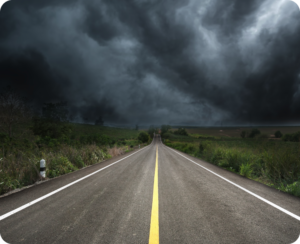For just a moment, let’s imagine: Maria left work exhausted after a long shift and made her way home with the hopes of taking off her shoes and relaxing for the night. The newest episode of her favorite show was waiting for her, along with the rest of the wine she’d saved the night before.
When Maria opened the garage door, she was hit by the pungent smell of heating oil. She looked down at the floor and saw a thick red liquid covering everything– her skates, her winter boots, the boxes propped up in the corner, and anything else on the garage floor.
At the bottom of the heater’s oil tank, she sees a small hole the size of her thumb, the culprit of over 500L of oil spilled across the floor of Maria’s garage.
The scenario is devastating and Maria had no choice but to call the fire department and environmental cleanup teams. The Department of Environmental Protection was also called in to contain the spill and assess the extent of the damage.
If you have a home and a home insurance policy, you might be thinking, “Insurance will cover that!” However, Maria’s claim was denied. Do you know why?
Coverage for damages from a heating oil spill is an additional coverage; it is not included in a standard Homeowners Insurance. Despite being a relatively inexpensive option, few people go beyond their standard coverage.
Stay tuned, because in this article, we will teach you everything you need to know about oil spills in your home and how to protect yourself from damages.
The danger of an oil spill
Like any material, the lining of an oil tank is susceptible to the buildup of rust and corrosion, which can cause holes and lead to leaks. An oil spill can emit harmful toxins and the amount of oil is extensive and can travel across your home and neighboring properties, as well as the surrounding land. This can cause quite the environmental disaster, the kind with a very high cleaning bill.
Oil spills can cause:
- Contamination of wells used for drinking water, irrigation and groundwater
- Air contamination
- Soil absorption of oil in and around your home, which can contaminate storm/toilet sewers, surface water and drainage ditches
- Destruction of helpful bacteria found in dry (septic) tank systems, requiring the entire system to be replaced
- Fire
Each of these issues have different costs, but they can all amount to thousands or even hundreds of thousands of dollars, to be covered by Insurance only if you’ve covered your home properly.
Not sure if you have oil spill coverage? Review your policy for free.
Oil spill coverage
Since not all homes are heated by oil, home insurance policies often exclude coverage for oil contamination on personal property, groundwater, and a neighbor’s property, unless you have purchased an oil remediation rider, which is optional.
Coverage usually includes:
- Loss or damage caused to your property by sudden and accidental overflow or leakage of fuel oil from a tank, appliance, or supply pipes connected to a heating system in use
- Cost of cleaning and decontaminating or remediating your facility
- Liability cost for trees, shrubs and plants, including debris removal for any tree, shrub or plant that forms a part of your property’s landscaping
If you have loss or damage caused by recurring leaks, fuel oil overflow, or classic negligence, you will not be covered. Coverage is also not valid if the leak occurs during the construction of the house or while it is unoccupied.
Massachusetts
After many accidents that led to homeowners going into debt for lack of adequate insurance, a law was passed in Massachusetts in 2008 that requires:
- Installing security devices in outdated and vulnerable systems
- Insurers and insurance brokers to provide coverage for oil spills whenever necessary
Even though many heating systems have been repaired since the law went into effect, many homeowners have not purchased this optional coverage and in the event of an accident, they will have to pay out of pocket.
The possibility of an oil spill remains regardless of the age of your system and any upgrades you may have had. Cleaning costs and potential liability can be high, especially when compared to the cost of adding this coverage, which is around the same cost of a 6 pack of beer, or 2 lattes from your favorite chain of coffee shops, per month, or less than a new pair of sneakers per year.
How to identify and prevent a leak?
While the risk of a leak cannot be 100% avoided, we can try to get close. Here are some things you’ll want to keep an eye or ask your oil delivery company to inspect:
- Have a professional check the condition of the tank and lines at least once a year.
- Regularly observe your fuel consumption year after year and compare it to previous seasons.
- All oil lines between the tank and the furnace must be inspected regularly.
- Keep all pipe connections clean and leak-free. Even a slow drip is dangerous.
- Know the amount of oil in your tank and how often you should ask for a refill.
- Be sure to keep access to the filling tube open.
- Consider upgrading your system or converting to an alternative fuel source.
Review your Home Insurance Policy
Remember: security never hurts, especially when a particular risk threatens not only your home but your finances. If your home is heated by oil, review your Home Insurance today to see if you are already protected from the damage of this kind of disaster.
If not, reach out to a Breezy Seguros agent to include all the coverage you need to protect yourself, your family, your home and your wallet!
Meta description:








